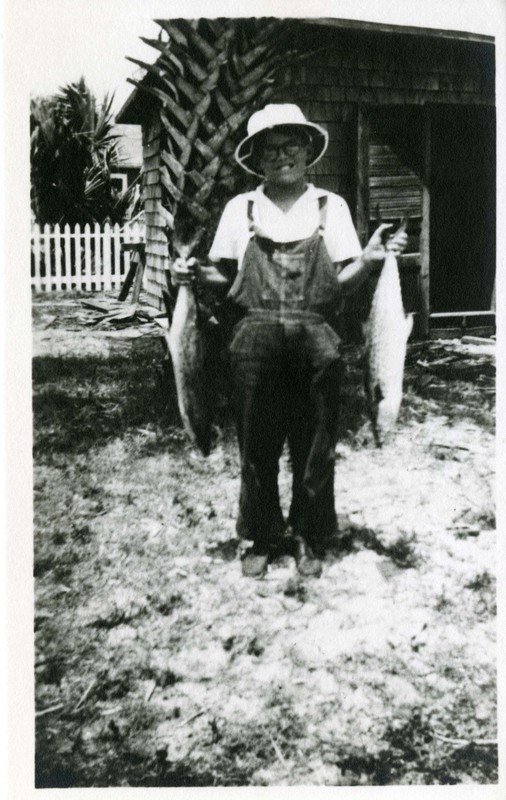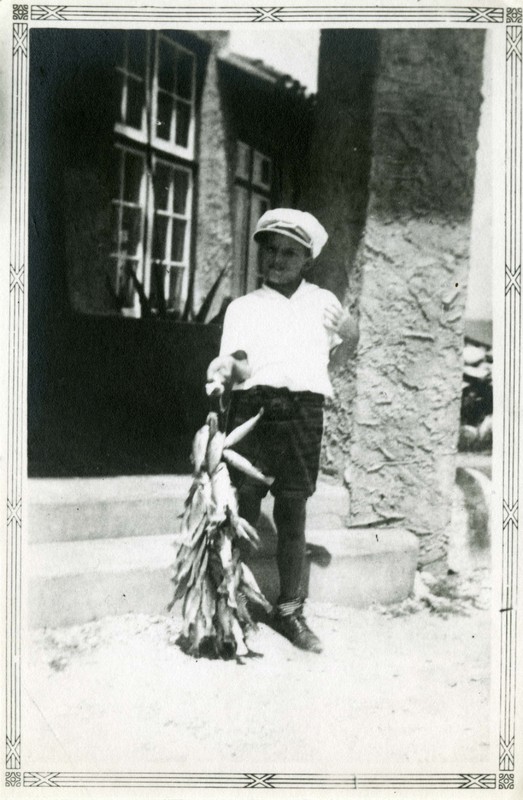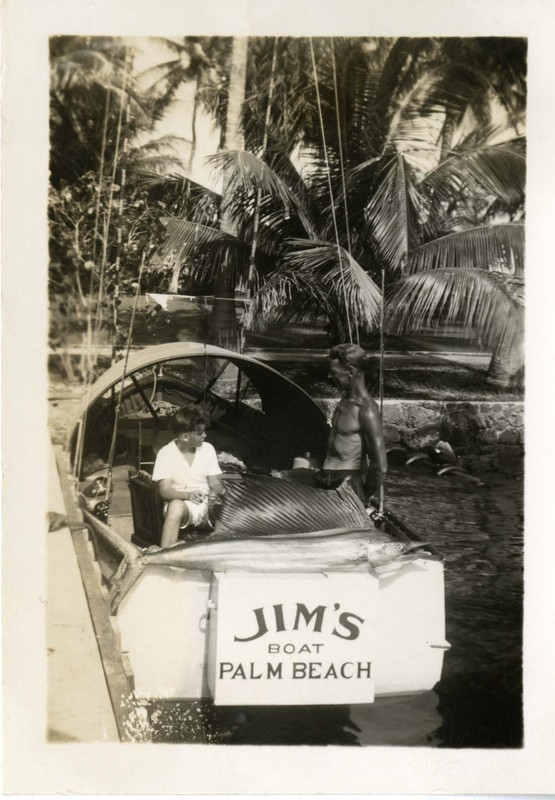The Child and the Fish: "The Pier"

Jimmy Merrill at Atlantic Beach FL, 1932. Special Collections, Washington U. at St. Louis.

Jimmy Merrill at Atlantic Beach FL, 1931. Special Collections, Washington U. at St. Louis.

Jimmy Merrill on his boat with unidentified man (William Plummer?). Special Collections, Washington U. at St. Louis.

Daytona Dock Fishing Pier, built 1925. See Mss. 6, 7 & 15.
"Another poem about fish--why?" (Manuscript 4)
In his memoir A Different Person, James Merrill described a dream he had in 1947 of becoming a fish in an aquarium.
All at once I realized I'd caught someone's eye. . . . I tried to signal to this person: Look! I'm not what I seem, I'm a man like you! . . . The stout man broke into smiles and pointed me out to his neighbors—voyez donc, a fish who imagined he was human, what next! (James Merrill: Collected Prose, 555-56).
Merrill explores a similar experience in his play The Bait (1953). His character Charles wins a bet by surviving ten minutes in a harness being dragged behind a deep-sea fishing boat. "The Pier: Under Pisces" raises the same question as the dream and the play about human identity and survival. The young boy in the poem is I to eye with the fish he is eating, and his identify is split as "I lift his fork."
When Merrill was eight, like the boy in "The Pier," he lived part of the year at Merrill's Landing in Palm Beach, Florida and could fish at places such as Daytona Dock, often referred to in the poem's manuscripts. The poem's description of the ocean and its fish goes beyond the perspective of a young boy. Far from the dock, the sharks roam "far and wide and deep" while nearer shore smaller fish approach the "Sphere of their worst dreams." Whatever their size, the fish participate in this violent world since even the smaller ones consume "gobbets none / Eschews as minced kin." The eroticism of the scene is also violent. Some fish appear
Ceramic-lipped in filmy
Peekaboo blouses,
Fluorescent body
Stockings, hot stripes . . .
and are "hauled kisswise" from the sea with a "torn mouth."
The scene takes place "Under Pisces," the astrological sign of the Fish (or rather two fish to signify duality), and Merrill's own sign (born on March 3). Whatever the boy feels, the poet knows that the fish, torn so violently from its element, have felt the "tug of fate." The poem concludes:
But left untasted on the plate
The fish. An eye, a broiled pearl, [meeting mine,
I lift his fork . . .
The bite. The tug of fate.
The rod of the "bamboo diviner" hangs over these "Jailbait consumers," nodding encouragement yet hauling them into a "blinding hell." What inspires James Merrill to write such a poem? He answers the question himself in Manuscript 4. The aquatic element shows us the "human condition . . . diminished and distorted." The twitching of the fish line is
A signal between intimates, a calling into
Play of forces equalized by--by nothing!
Manuscript 4 is not so much a draft of "The Pier" as a completed variation on its theme.
The sexual violence of the seascape threatens the "safe . . . lit shrine" where the boy feels the tug of fate and takes the bite or bait. Yet this nightmarish scene is expressed in playful quatrains of ingeniously varied metrics, rhymes and alliterations. Slant rhymes (brighter and water, totem and bottom) combine with alliterative phrases (subliminal with minced kin) as well as submerged rhymes, "where bubbles burst / Sphere of their worst dreams." The final quatrain is anchored with the full rhyme of plate with fate. (See the link to Jimmy Merrill's poem "Palm Beach" [1936] with its clever rhymes.) Quick iambic rhythms—"if catch is what he can," "While far and wide and deep"—contrast with the "Bolero beat" of heavy stresses in "supermarket Muzak," "great sharkskin suited," and "Stockings, hot stripes." "The Pier" is a poetic barcarolle of swaying rhythms: "hypnotic ebb and flow . . . the undertow's / Pebble-filled gourds repeat." Reading descriptions of poetic meters, however, is tedious compared to seeing how a poet revises and revises until the rhythms come right, and for that we have Washington University's 37 manuscripts of the poem.
